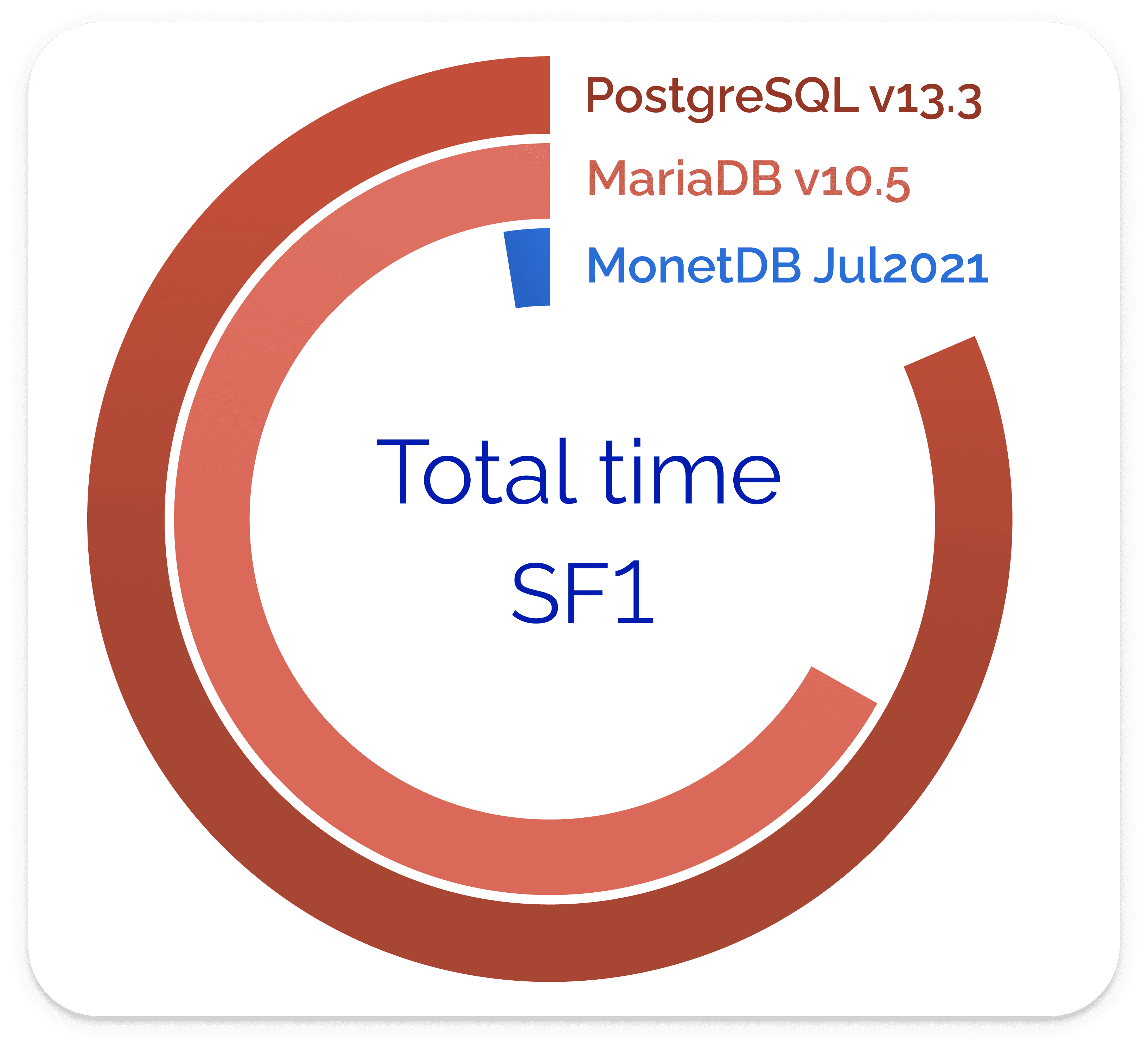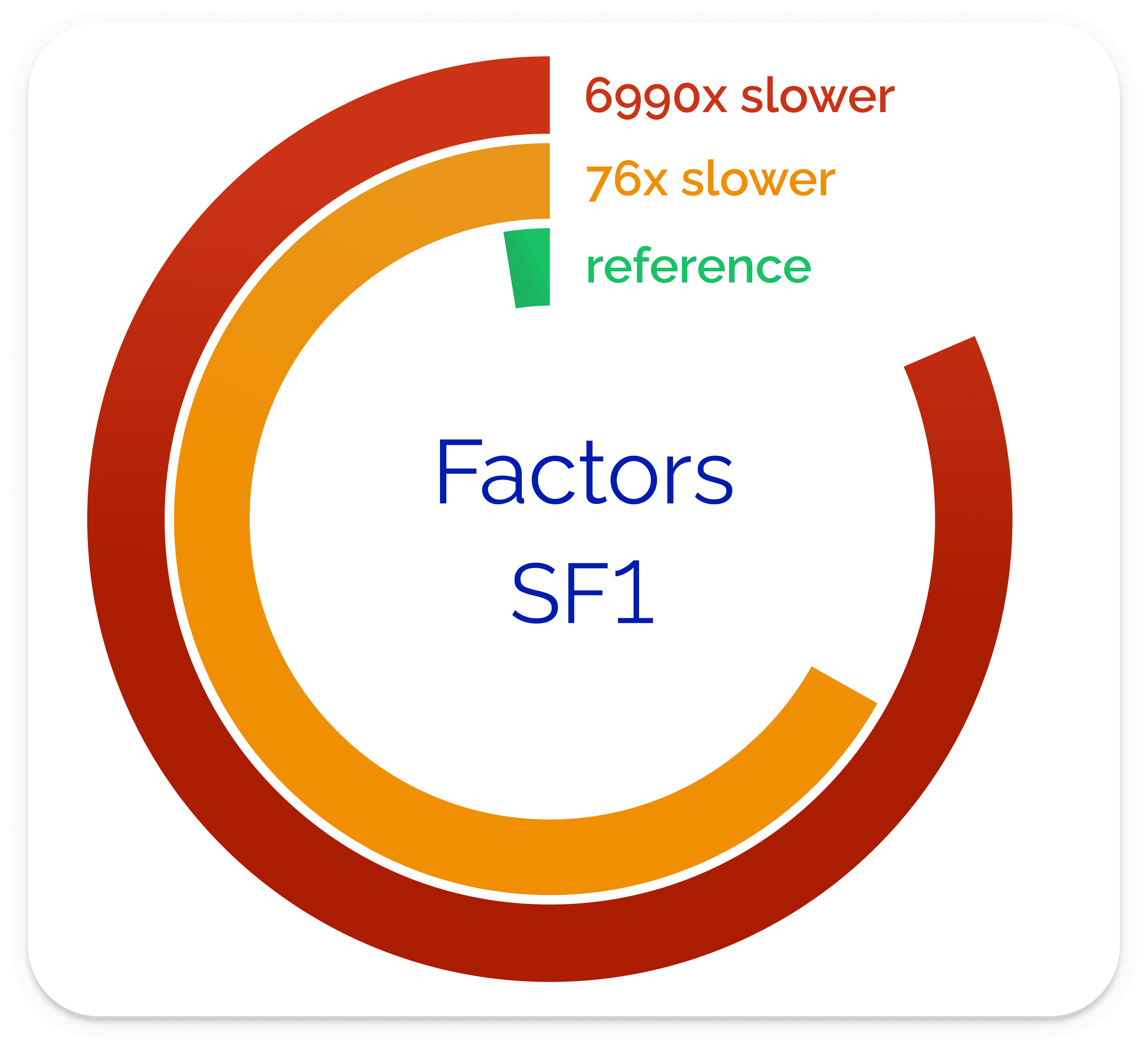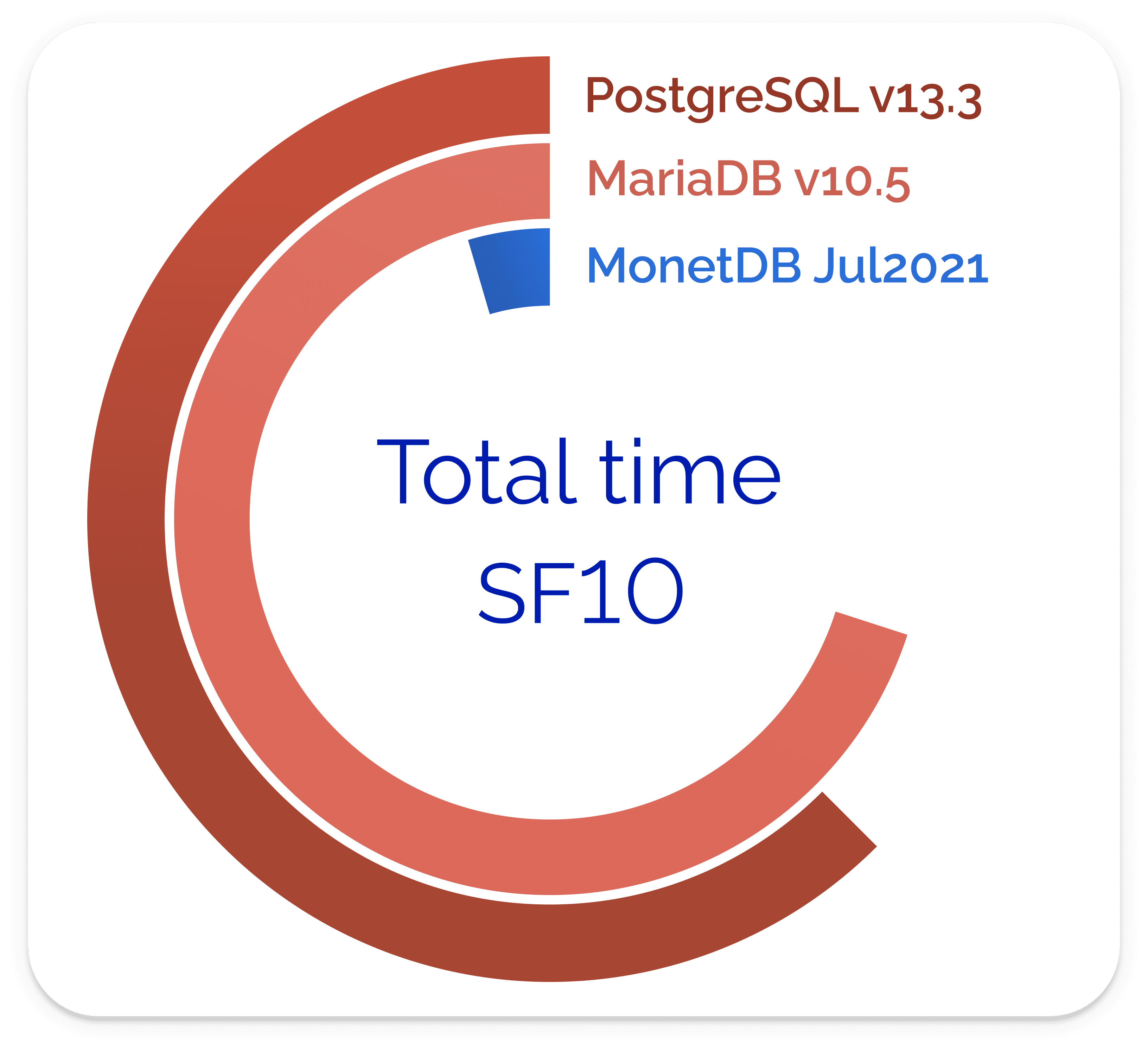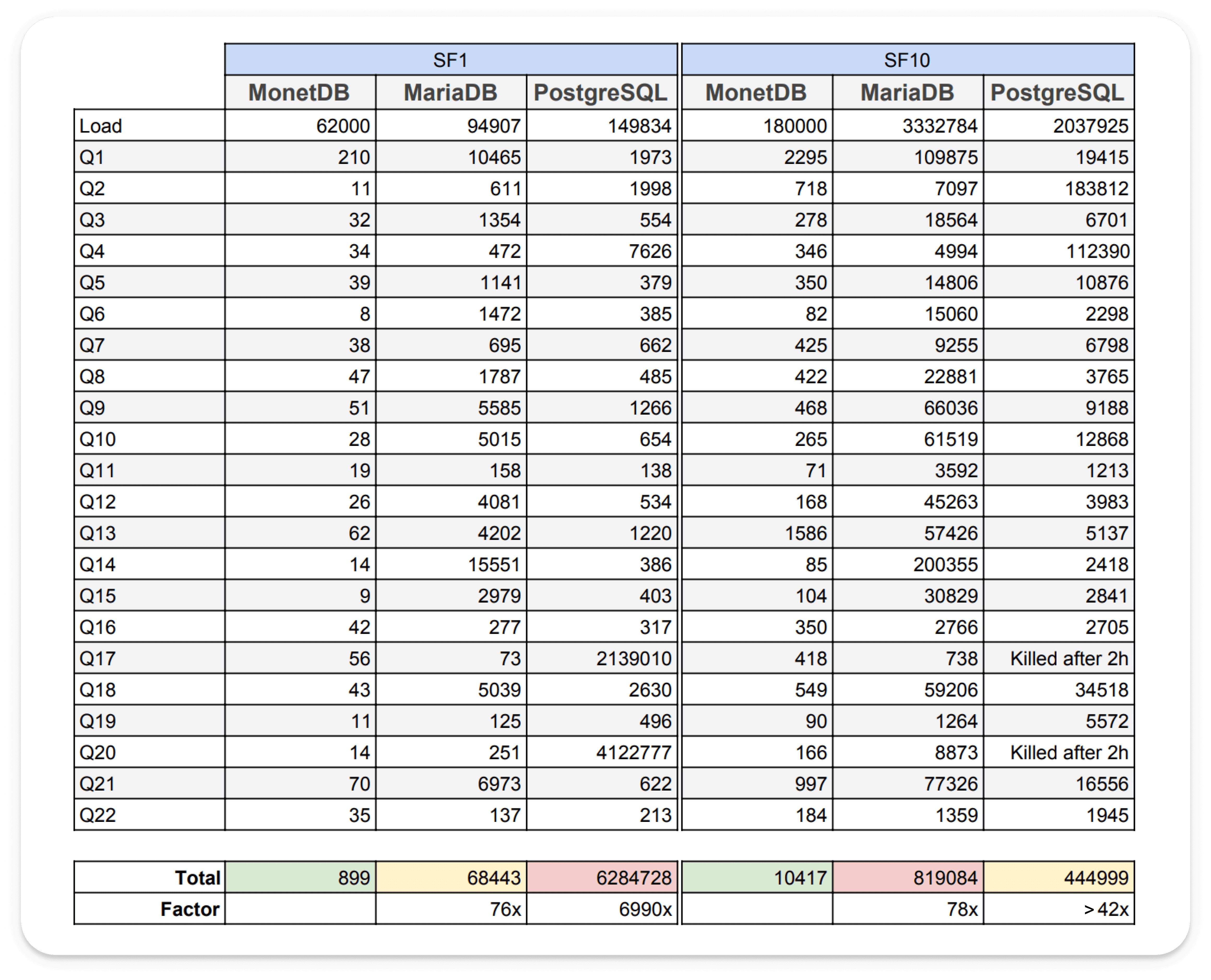We continuously improve MonetDB to offer the best performances in the market. For this, and to avoid performance regressions between successive releases, we use public benchmarks, customer workloads, and targeted experiments.
The case for column stores in data analytics
TPC-H SF1 and SF10 benchmarks
Column stores have been invented as the answer to the poor performance of row stores when faced with an analytics workload. The predominant reference case is the TPC-H benhmark.




The case for column stores in data analytics TPC-H SF1 and SF10 benchmarks Column stores have been invented as the answer to the poor performance of row stores when faced with an analytics workload. The predominant reference case is the TPC-H benhmark. To illustrate this performance gap, the table below shows the results of running the benchmark in May 2021 on out-of-the-box MariaDB v10.5 and Postgresql v13.3 with knobs set to maximal performance. The hardware is a $1000 NUC with Intel(R) Core(TM) i7-8650U CPU @ 1.90GHz, 32GB RAM and 1TB NVMe of disk space.
The table reports the minimum time recorded, in milliseconds (ms), after 3 subsequent runs.
Disclaimer. A benchmark should primarily be used as a mirror for the system architect to check progress and to learn from an independently developed system for hints to improve. The results should be considered in context and often a workload derived from the target application gives you more insight to choose among the many database system offerings.
